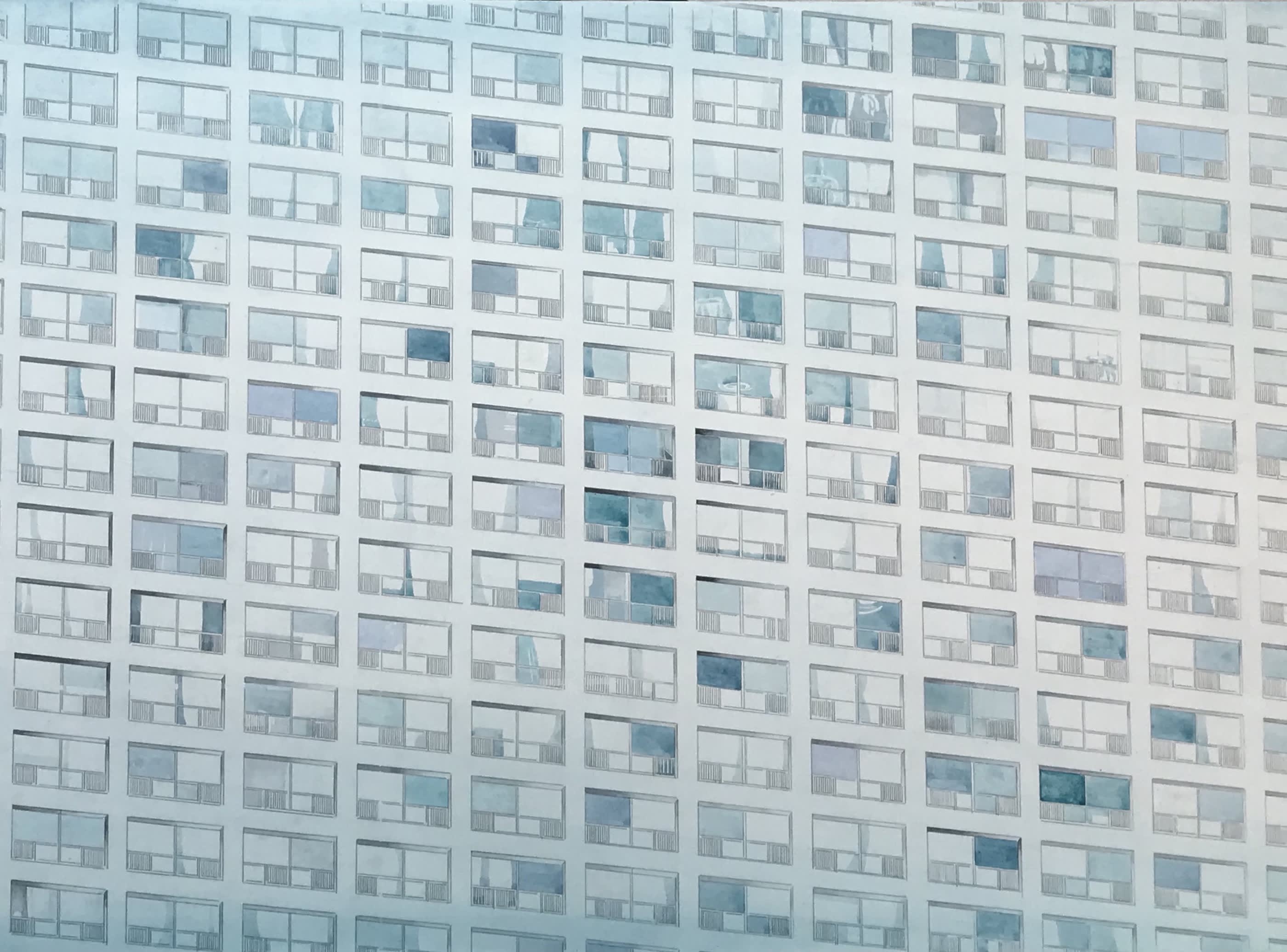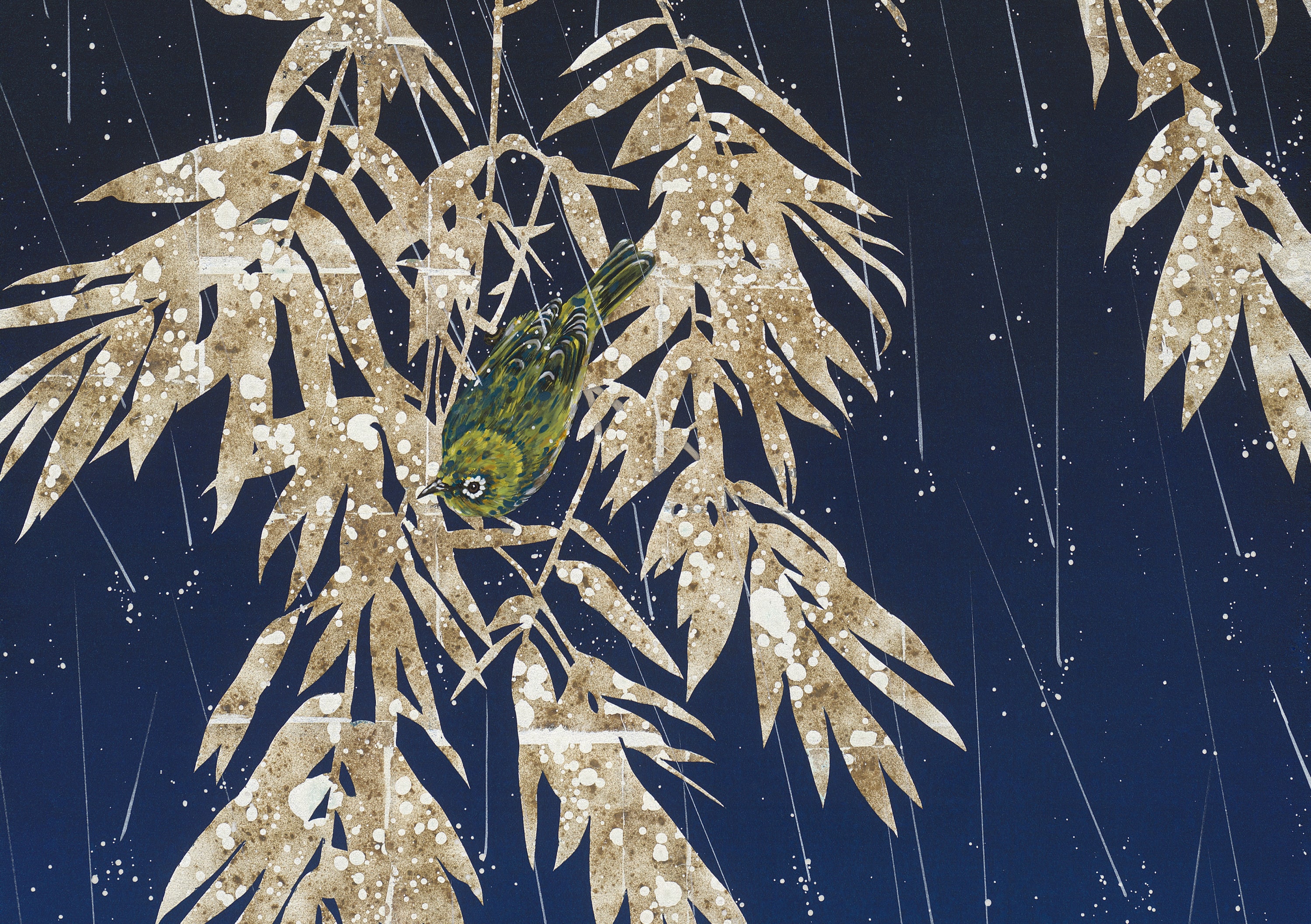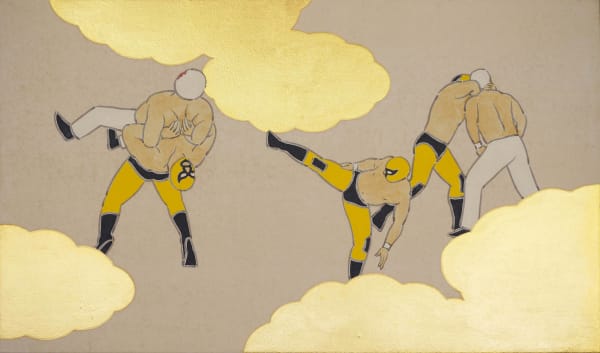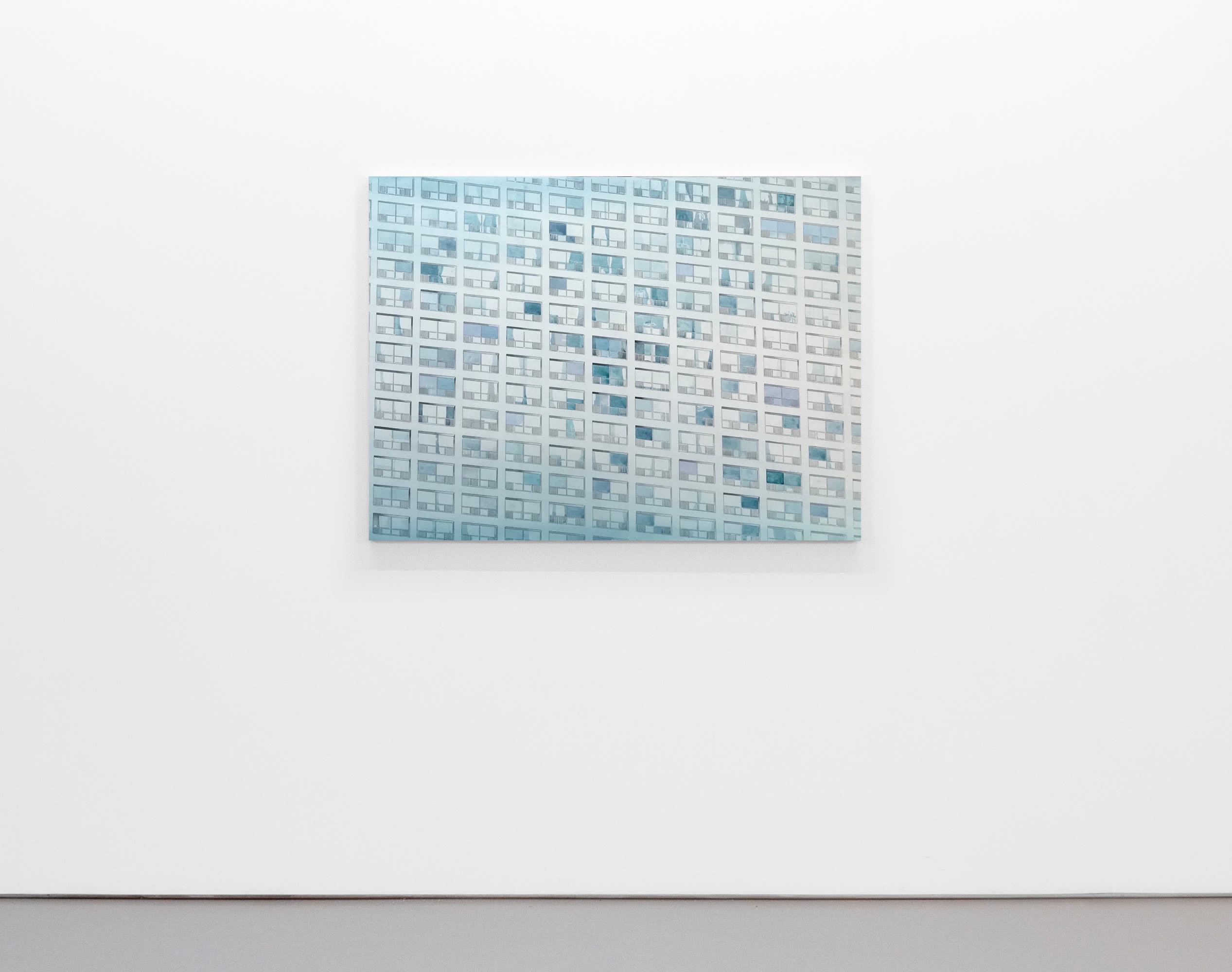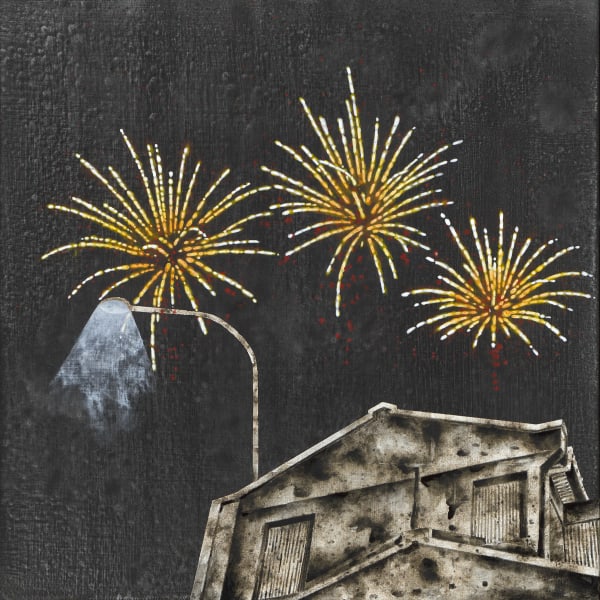-
“伏線 (fukusen) in Japanese kanji and 伏筆 (fubi) in Chinese characters share the same meaning: foreshadowing. I think of art history and contemporary art as a novel. Under the evolution of oriental media and contemporary art, the artists I have chosen are like a foreshadowing in the storyline, an ignition point that sparks the development of contemporary art. Choosing the character 線 (meaning “line”) is because this is something that keeps on going and not just a transient moment radiating from one single point.”__Curator YEH Jen-Kun
-
Hiroyuki MORI, Masayoshi NOJO, CHANG Ching-Wen, YEH Jen-Kun, HSU Fan-Hsuan, Ryo SHINAGAWA, CHEN Yi Chia
The seven participating artists are between 35 and 45 of age and all of them have been working and innovating with oriental media. Some have tapped into three-dimensional composition, some have bestowed more symbolic expressions to contemporary design, while some have developed innovative ways of using metal foils (gold, silver, etc.) different from the conventional application. Their diverse range of works should unveil new possibilities for the future of oriental media. These seven artists are not only accomplished in the use of techniques such as Nihonga and ink wash, but they draw from tradition to search for artistic vocabulary corresponding to contemporary culture. By showcasing the uniqueness and differences of their creative facets, they are essentially enriching the diversity of oriental media in the contemporary art world.
-

森博幸 Hiroyuki MORI
VS, 2021Tap images for more information
Sold -
-
-

森博幸 Hiroyuki MORI
VS, 2020Tap images for more information
Sold -
The History of Asian Gouache
Asian gouache or “glue color”, a literal translation of its Chinese name, is a type of painting where the binder for the pigments is animal glue, as opposed to vegetable oil used in oil paint and vegetable gum for watercolors. Inksticks and Chinese ink used in ink-wash paintings also use animal glue as binder. Thus, the difference between Asian gouache and ink wash lies not so much in the binder medium, but in the choice of pigments and the way they are used. It is therefore clear that using “glue color” to classify this category of painting is not as straightforward as the Chinese name suggests but is rather determined by complex historical factors. Asian gouache refers to a method of painting in which animal glue is used as the adhesive and water as the vehicle to fix pigments onto the surface of something. Having a long history, it can be widely seen across ancient Egypt, ancient Europe, ancient India and ancient China. Meanwhile, the name “glue color” was first proposed by Lin Chih-Chu in 1977 and has only been used in Taiwan for less than half a century. If we take a genealogical look at it, Lin’s “glue color painting” is actually Toyoga (Eastern painting) used in Taiwan during the Japanese occupation period, or Nihonga (Japanese painting) in Japan. Traditional East Asian painting method was introduced to Japan from China and the Korean peninsula. It was called Karae (Tang dynasty Chinese painting) in the Heian period, with contradistinction to Yamatoe (Japanese painting) depicting landscape and customs in Japan. From the Meiji period onwards, new Japanese paintings that inherited the traditional Japanese painting techniques while drawing inspirations from Western painting came to be called Nihonga (Japanese painting). The paintings in opposition to Nihonga were no longer Karae or Kanga (Han painting), but Yoga (Western painting). During the Japanese colonial period, the term Nihonga was introduced to Taiwan along with modern art education, but it was renamed Toyoga in colonies such as Korea and Taiwan. When the Nationalist government retreated to Taiwan after the war, Chinese painters who crossed the strait began debating over what’s considered “orthodox” Chinese painting. Hoping to steer clear of this controversy, Lin Chih-Chu named “glue color” after its binder medium.
-
-
-
-

能條雅由 Masayoshi NOJO
海市蜃樓 #71 Mirage #71, 2021壓克力顏料、銀箔、鋁箔/畫布 Acrylic, silver foil and aluminum foil on canvas
47 1/4 x 59 1/4 in
120 x 150.5 cmNT$ 360,000 -
-

張靜雯 CHANG Ching Wen
日常 Daily, 2019Tap images for more information
NT$ 140,000 -

張靜雯 CHANG Ching Wen
城 Castle, 2018Tap images for more information
NT$ 450,000 -
-
A brief introduction on techniques of asian gouache
-
-
-
-
-
 葉仁焜 YEH Jen-Kun散落 III Scattering Ashes III, 2021水墨、膠彩、銀箔/畫布 Ink, eastern gouache and silver foil on canvas17 3/4 x 17 3/4 in
葉仁焜 YEH Jen-Kun散落 III Scattering Ashes III, 2021水墨、膠彩、銀箔/畫布 Ink, eastern gouache and silver foil on canvas17 3/4 x 17 3/4 in
45 x 45 cmSoldView more details -
 葉仁焜 YEH Jen-Kun散落 IV Scattering Ashes IV, 2021水墨、膠彩、銀箔/畫布 Ink, eastern gouache and silver foil on canvas17 3/4 x 17 3/4 in
葉仁焜 YEH Jen-Kun散落 IV Scattering Ashes IV, 2021水墨、膠彩、銀箔/畫布 Ink, eastern gouache and silver foil on canvas17 3/4 x 17 3/4 in
45 x 45 cmSoldView more details -

-
-
-

葉仁焜 YEH Jen-Kun
雪融之際III When the Snow Melts III, 2022Tap images for more information
Sold -
-

徐凡軒 HSU Fan Hsuan
香江 I Xiangjiang I, 2020Tap images for more information
NT$ 252,000 -

徐凡軒 HSU Fan Hsuan
綺羅星 Little Stars, 2021Tap images for more information
Sold -
Materials and Techniques of Asian Gouache
There are no other restrictions on the materials used in Asian gouache except that animal glue must be used as the binder medium. The support can be stone, soil wall, wood plank, hemp, silk, or paper; the pigments can be minerals, soils, metals or shells; and the dyes can derive from plants, insects or ink. The ways humans perceive and the social function of art have evolved over time. The presence or absence of materials in an area and the routes of transmission of resources, culture and technology are influenced by geographical conditions. Hence the selection and use of painting materials vary with the time and place, each with its own preferences and limitations. In the Kofun period, most of the murals in the burial chambers were stone walls. During the Nara period, the murals of Buddhist temples were mostly clay walls, while those in the Heian period were mostly wooden ones. The Buddhist and landscape paintings of the Nara period were mostly on hemp, and then largely on silk in the Heian period, whereas the extravagant and gorgeous partition or interior wall paintings of the Momoyama period were mostly painted on paper. Inheriting more than just traditional Japanese painting techniques, Nihonga also borrowed techniques from Western painting, with the aim of developing Nihonga into a genre that can compete with Yoga (Western painting). In order to achieve this goal, Nihonga adopted the scale of oil paintings to determine the size of the scene and emphasized in teaching the use of “live sketching” to rid of the disadvantages of the “copybook method”. At the same time, Nihonga considered how to be modern but different from Western. To enrich the choices of colors, aside from finding or synthesizing various natural or artificial minerals, the minerals are subdivided by particle size that give different color gradations. Influenced by Nihonga, the choice of support for Asian gouache is primarily Japanese paper capable of supporting the heavy layers of pigments. After mounting the paper on a wooden board, live sketching is done first before it is finalized for painting. In terms of the choice of pigments and techniques, the main focus is on accentuating the mineral colors and freehand brushstrokes that can bring out the pigment texture. Semi-automatic techniques commonly used in Western modern painting such as dripping, rubbing, and grinding are also incorporated.
-

品川亮 RYO SHINAGAWA
牡丹 Peony, 2022Tap images for more information
Sold -
-
How to Appreciate Asian Gouache
The appreciation of Asian gouache remains the same as that of modern paintings—an aesthetic eye for the form, color, composition, brushstroke and so on. Of course, the more knowledgeable one is about its history, materials and techniques, the more one can appreciate its meaning and purpose. Although Nihonga is period-oriented, there is no shortage of works that engage in dialogues with history, invoking both the classic form of ancient Japanese art with a strong sense of period style and inheriting painting motifs with a long historical tradition. In the former case, there is Fukinuki yatai (blown-off roof) commonly seen in Genji Monogatari Emaki (The Tale of Genji Scroll), the “Golden Clouds” of the Kano School, and the flat and decorative patterns of the Rinpa school; while in the latter case, there are motifs like the four seasons of landscape, snow, moon and flowers, autumn grass, flowers and birds, and beauties. In contrast, Asian gouache seldom invokes classic forms with a strong sense of history. Even when traditional painting motifs are chosen, they are based on what are seen in the live sketching. In terms of the materials used, oil painting involves grinding minerals to the finest participles, mixing the colors on a palette and then applying them on the canvas. Asian gouache, on the other hand, uses varying coarseness and fineness of the mineral particles to distinguish the chroma. After applying them on the support in layers, it achieves the color mixing effect through the heterogenous fineness of the particles and the varying densities. Similar to oil paintings, classical technique of Asian gouache also uses multiple thin layers of paint in expressing uncertain space. The difference: this technique captures light in oils, but air in Asian gouache. The modern technique of Asian gouache also uses impasto to express the texture of pigments as in oils. While oil impasto produces a viscous and glossy cream-like texture, the impasto of Asian gouache from applying coarse-grained minerals produces a dry sandpaper-like glittery texture. Of particular note is the use of metal foils. Their use in modern Asian gouache rarely refers to traditional religious connotations, but is rather seen as a material that changes the thickness or demarcates the spaces of a painting. The torn edges of metal foil created by tearing are also viewed as a special kind of brushstroke or texture, and are used in the shaping or composition.
Above articles: The History of Asian Gouache, Materials and Techniques of Asian Gouache, How to Appreciate Asian Gouache, wrote by SHEN, Yu-Chang, PhD in Doctoral Program in Art Creation and Theory, The College of Visual Arts, Tainan National University of the Arts, Tainan, TAIWAN
-
Foreshadowing
Curator: YEH Jen-Kun
Artists: CHANG Ching Wen, CHEN Yi Chia, HSU Fan Hsuan, Hiroyuki MORI, Masayoshi NOJO, Ryo SHINAGAWA, YEH Jen-Kun
Date: 05 March – 26 March, 2022
Address: ESLITE GALLERY∣B1, No. 88, Yanchang Rd., Xinyi Dist., Taipei City 110055, Taiwan (eslite spectrum Songyan Store)
Opening Hours: 11:00-19:00, Tuesday – Saturday (closed on Sunday and Monday)
Foreshadowing: Hiroyuki MORI, Masayoshi NOJO, CHANG Ching-Wen, YEH Jen-Kun, HSU Fan-Hsuan, Ryo SHINAGAWA, CHEN Yi Chia
Past viewing_room


